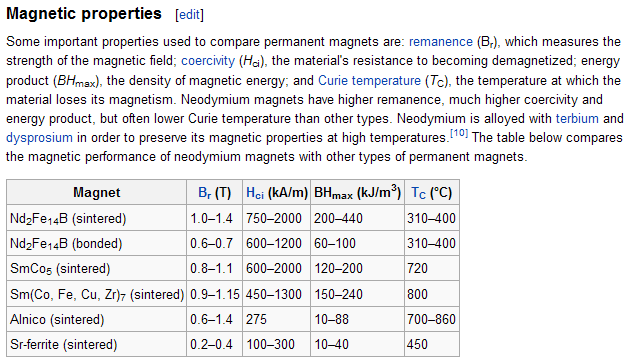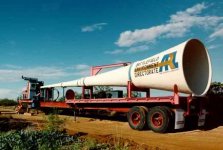Have you been able to "sell" your expertise?
Hi Andrew,
Hornresp is just a very enjoyable hobby for me - nothing more. The fact that people have found the software to be useful is an added bonus 🙂.
The original Fortran IV version of the program was written to analyse a Klipschorn bass corner horn. I happened to hear one at a hifi show in the late 1960's and wanted to understand how it worked.
Kind regards,
David
I am a bit puzzled about the system efficency plot.
Hi Sabbelbacke,
Thanks for this.
With the release of Product Number 3300-131130 system efficiency was changed from 'total acoustical output power' / 'total electrical input power' to 'net acoustical output power' / 'total electrical input power'. It seems that the error was inadvertently introduced at that time. The problem will be fixed in the next update.
Kind regards,
David
Bjorno's sims in #4176 are almost the complete inverse of the Voice of the theatre, which uses a short front load horn, a huge back chamber and a port depth of 3/4" inch (the plywood thickness).
And afcourse the speaker was original uge, high qts? in this old days.
was made for the tube power amps because in that time there was not much watts.
regards
kees
Hello David,With the release of Product Number 3300-131130 system efficiency was changed from 'total acoustical output power' / 'total electrical input power' to 'net acoustical output power' / 'total electrical input power'. It seems that the error was inadvertently introduced at that time. The problem will be fixed in the next update.
thanx for adressing this issue.
Kind regards,
Sabbelbacke
And afcourse the speaker was original uge, high qts?
Why do you think so? High Qts implies a weak magnet system, which results in low efficiency. Not what you want with low powered amps, or in sound reinforcement in general.
The 515 woofer used in many of the Voice of the theatre speakers had very low Qts: Altec Thiele-Small Parameters
-Bjørn
Why do you think so? High Qts implies a weak magnet system, which results in low efficiency. Not what you want with low powered amps, or in sound reinforcement in general.
The 515 woofer used in many of the Voice of the theatre speakers had very low Qts: Altec Thiele-Small Parameters
-Bjørn
I thought the most old speakers has not so strong magnet because of technologie was not so good as in these days. I do now high qts is strong motor afcourse minus the mass of cone and coil also more heavy in that old days.
Now is this speaker system extremely expensive in that time, maybe electo voice did use bigger magnet systems and best cone material.
I have never look at it also, knowledge is from tube amp stuff you now, thanks for the info. I do now that speakers for horns need a low qts, in the 40 there are more open baffles in the radios
these has high qts, but I think also in the very old time mony and qts has a relationship, like for electro voice who is grow big with that.
PS damping has to be a little more, in whole length of the pipe on the closed end and some from speaker to the open end, (480 grams) I have fibre whool from pillows, get it from the factory trashcan.
regards
kees
Last edited:
I thought the most old speakers has not so strong magnet because of technologie was not so good as in these days. I do now high qts is strong motor afcourse minus the mass of cone and coil also more heavy in that old days.
It is true that permanent magnets were not so good in the old days. This changed a lot during WWII, due to Alnico, that made it possible to make powerful permanent magnet speakers. Before Alnico, if you wanted a powerful magnet system, you had to use electromagnets (field coils). Yes, technology was more limited back then, but that mostly meant that powerful magnet systems were expensive, not that they did not exist. Heavy cones and coils is also something you find more frequently in modern speakers, partly due to increased power handling. The high efficiency vintage stuff usually have a quite light moving system.
I have never look at it also, knowledge is from tube amp stuff you now, thanks for the info. I do now that speakers for horns need a low qts, in the 40 there are more open baffles in the radios
these has high qts, but I think also in the very old time mony and qts has a relationship, like for electro voice who is grow big with that.
If you look at radios, yes, you will find mostly high-Qts speakers (but most 40s and 50s radio speakers I have seen did not use very heavy moving systems - if they wanted reasonable sensitivity with the small magnet systems they used, they had to have a light diaphragm). Speakers used for cinema sound systems and sound reinforcement are in a different league. In radios, they had to cut costs. In pro audio, efficiency and reliability was more important. You cannot really compare the two markets.
(Sorry for the off-topic post, sometimes I can't help but to comment on the history of audio technology 🙂 )
-Bjørn
the magnet technology was very good.I thought the most old speakers has not so strong magnet because of technologie was not so good as in these days...........
That was why they got good performance from very low power inputs.
The ONLY reason to go to ceramic magnets is to SAVE money.
I replaced my Richard Allan Pavanne with the Tannoy Berkley.
I was very surprised to "hear" that the high efficiency Tannoy needed quite a bit more power/voltage than the Pavanne for the same sound output.
Last edited:
Taken from
Neodymium magnet - Wikipedia, the free encyclopedia

I tried to put this table in bbcode in here, but failed, does anybody know how to do it? It used to work just like HTML by just changing > to ] etc, but I have not luck with this method.
Neodymium magnet - Wikipedia, the free encyclopedia
I tried to put this table in bbcode in here, but failed, does anybody know how to do it? It used to work just like HTML by just changing > to ] etc, but I have not luck with this method.
Attachments
Can be used in a war, to blow away the enemy without killing them.
Can be used in a war, to blow away the enemy without killing them.
Alternatively, by putting a microphone at the throat rather than a drive unit, perhaps it could be used as a giant hearing device to eavesdrop on the enemy from afar 🙂.
Alternatively, by putting a microphone at the throat rather than a drive unit, perhaps it could be used as a giant hearing device to eavesdrop on the enemy from afar 🙂.
Hitler did, napoleon did. both lost.😀
It is offtopic but!
This do work, the Haarp is pointed on England, see there the wether, and here, we have the softest stormy wether ever.
I did mention that on weatherspace and twitter and the photo is gone!!!. that photo is included in post.
http://www.theweatherspace.com/haarpstatus-europe/
regards
kees
This do work, the Haarp is pointed on England, see there the wether, and here, we have the softest stormy wether ever.
I did mention that on weatherspace and twitter and the photo is gone!!!. that photo is included in post.
http://www.theweatherspace.com/haarpstatus-europe/
regards
kees
Attachments
Last edited:
Hornresp Update 3400-140212
Hi Everyone,
CHANGE 1
Loudspeaker Wizard absorbent filling material values are now saved as part of the permanent data record. Existing Hornresp.dat data files will be automatically updated to the new format - no action is required by the user.
CHANGE 2
Filter Wizard settings can now be saved as part of the permanent data record. Existing Hornresp.dat data files will be automatically updated to the new format - no action is required by the user.
Click the Save button in the Filter Wizard Memory window to permanently save the current settings. Click the Reset button in the Memory window to reset current settings back to the saved settings. Press the F5 function key to restore all controls to their initial default settings.
The F1 to F4 and Ctrl+F1 to Ctrl+F4 temporary memory Store and Recall functionality now applies to all filter types, not just to passive filters.
CHANGE 3
The combined response system efficiency bug described in Post #4179 has now been fixed. My thanks to Sabbelbacke for reporting the problem.
NOTE
It is recommended that users study the Loudspeaker and Filter Wizard sections in the Hornresp Help file to fully understand the features now available in these tools.
Kind regards,
David
Hi Everyone,
CHANGE 1
Loudspeaker Wizard absorbent filling material values are now saved as part of the permanent data record. Existing Hornresp.dat data files will be automatically updated to the new format - no action is required by the user.
CHANGE 2
Filter Wizard settings can now be saved as part of the permanent data record. Existing Hornresp.dat data files will be automatically updated to the new format - no action is required by the user.
Click the Save button in the Filter Wizard Memory window to permanently save the current settings. Click the Reset button in the Memory window to reset current settings back to the saved settings. Press the F5 function key to restore all controls to their initial default settings.
The F1 to F4 and Ctrl+F1 to Ctrl+F4 temporary memory Store and Recall functionality now applies to all filter types, not just to passive filters.
CHANGE 3
The combined response system efficiency bug described in Post #4179 has now been fixed. My thanks to Sabbelbacke for reporting the problem.
NOTE
It is recommended that users study the Loudspeaker and Filter Wizard sections in the Hornresp Help file to fully understand the features now available in these tools.
Kind regards,
David
Attachments
Hi David,
since i have found your great pice of software, nearly all other loudspeaker calculators have gone to the recycle ...
Nowadays diplays with Full HD resolution are standard, I am missing the option to scale the graphs in Hornresp, the Hornresp window is very small compared to the diplay resolution. It would also be nice to specify a custom frequency range the it is easier to focus on the range which is important for subwoofer design.
Is there a chance to get these features in a further release of Hornresp?
since i have found your great pice of software, nearly all other loudspeaker calculators have gone to the recycle ...
Nowadays diplays with Full HD resolution are standard, I am missing the option to scale the graphs in Hornresp, the Hornresp window is very small compared to the diplay resolution. It would also be nice to specify a custom frequency range the it is easier to focus on the range which is important for subwoofer design.
Is there a chance to get these features in a further release of Hornresp?
- Home
- Loudspeakers
- Subwoofers
- Hornresp



